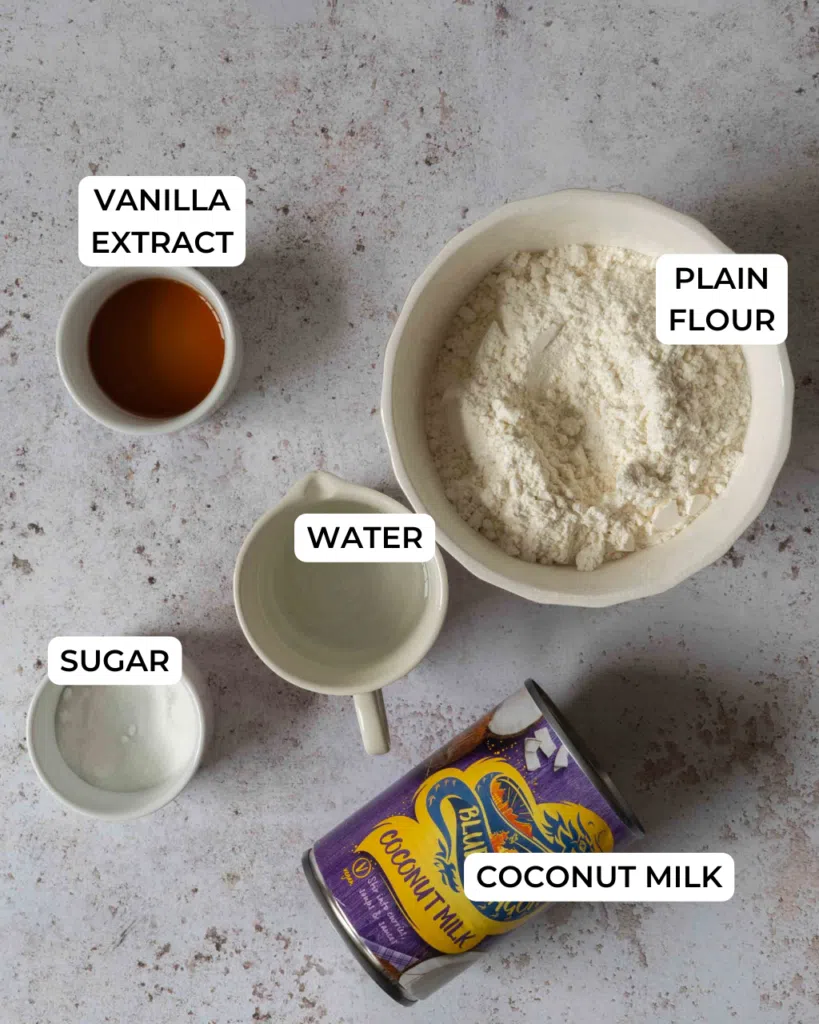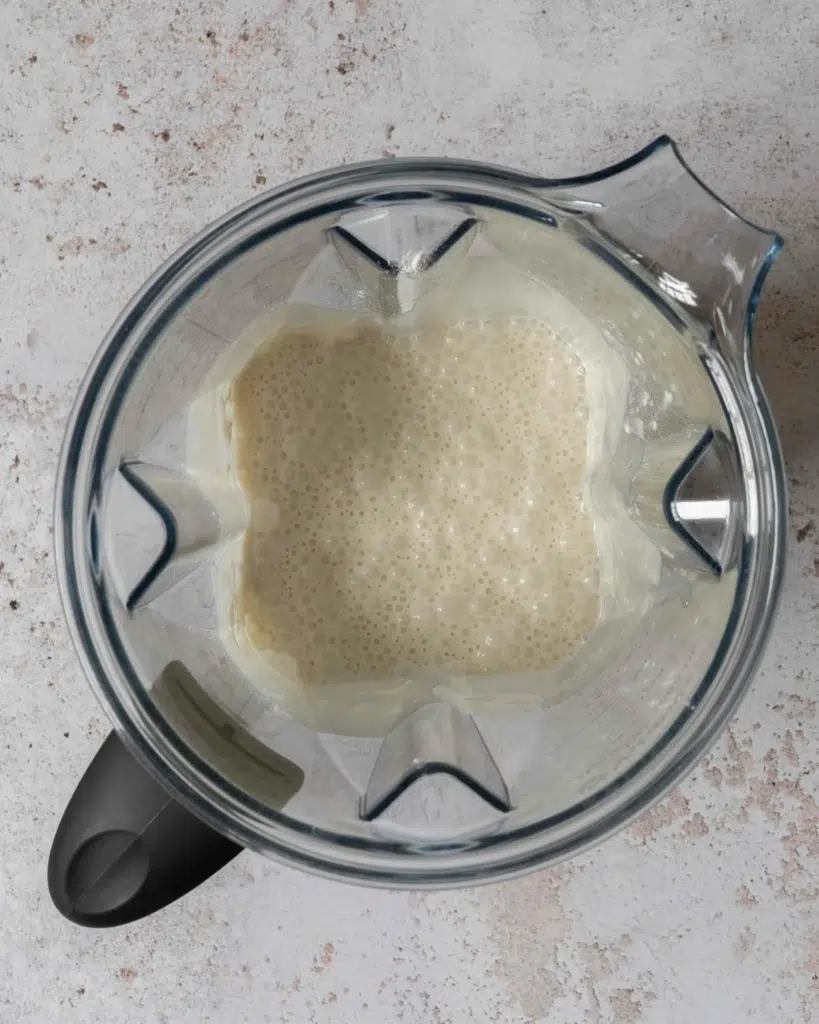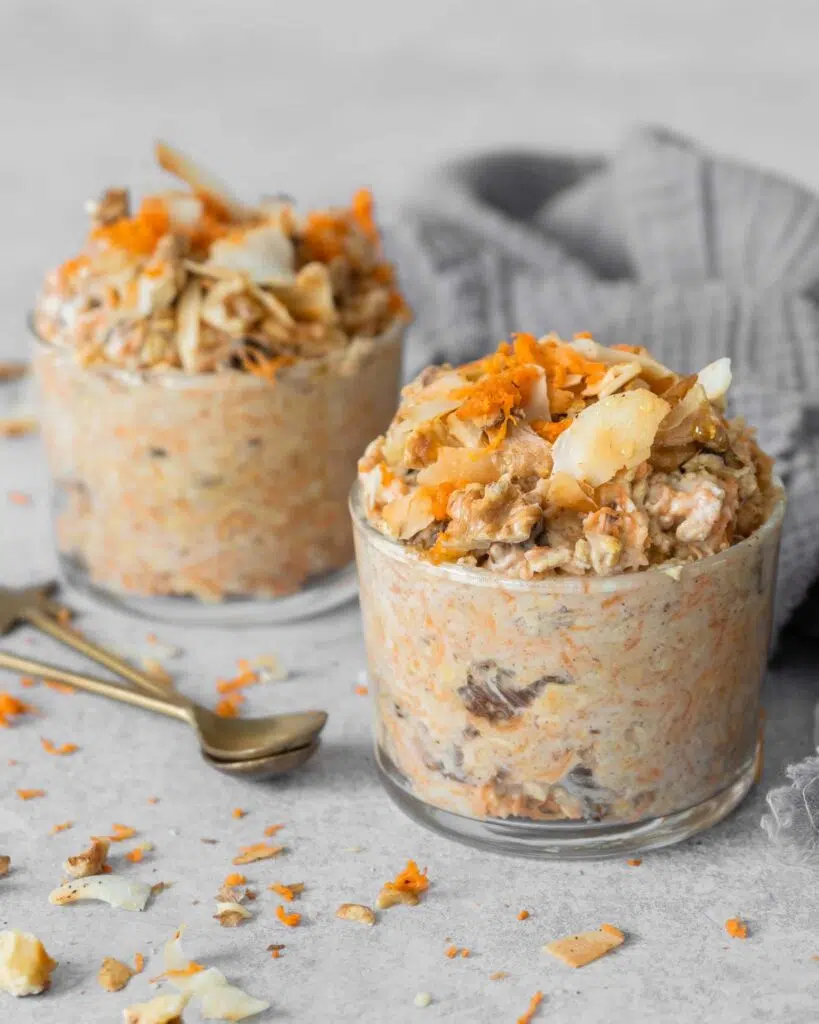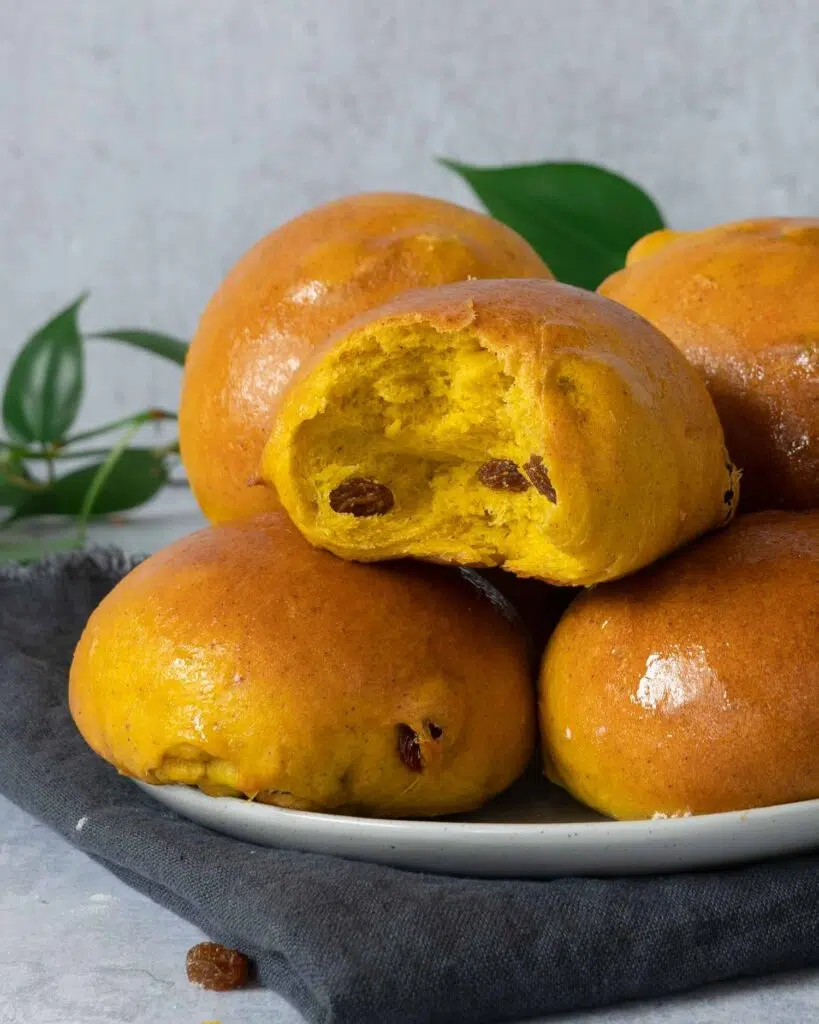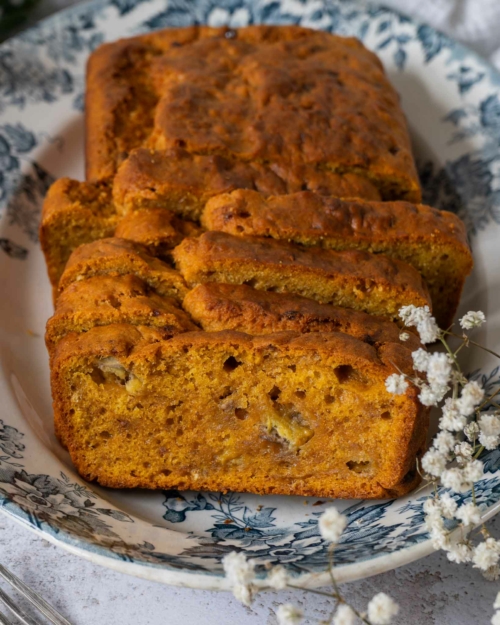These Coconut Milk Crepes are beautifully light and tender, with crisp edges and a delicate coconut flavour. Making crepes doesn’t need to be complicated; this recipe uses 6 simple ingredients and we’re giving you all of our top tips for making perfect crepes, without the need for eggs and dairy.
These homemade coconut milk crêpes are tender and thin, with a buttery flavour and crispy edges. Using creamy coconut milk for richness, there is no need for vegan butter in this recipe, making these crêpes a healthier alternative.
Making crêpes at home can feel intimidating but it is not as difficult as it may seem. This simple 6-ingredient crêpe batter is whipped up in just a couple of minutes and as long as you have a decent non-stick pan to hand, beautiful coconut milk crepes are within reach.
I’m walking you through the process of how to make crepes with coconut milk, sharing success tips and lots of delicious vegan crêpe filling ideas to enjoy with loved ones this pancake day.
Quick links:
- The written recipe
- Success tips
- Step by step instructions with photos
- Vegan crêpe filling ideas
- FAQs
- Other ‘must try’ vegan recipes
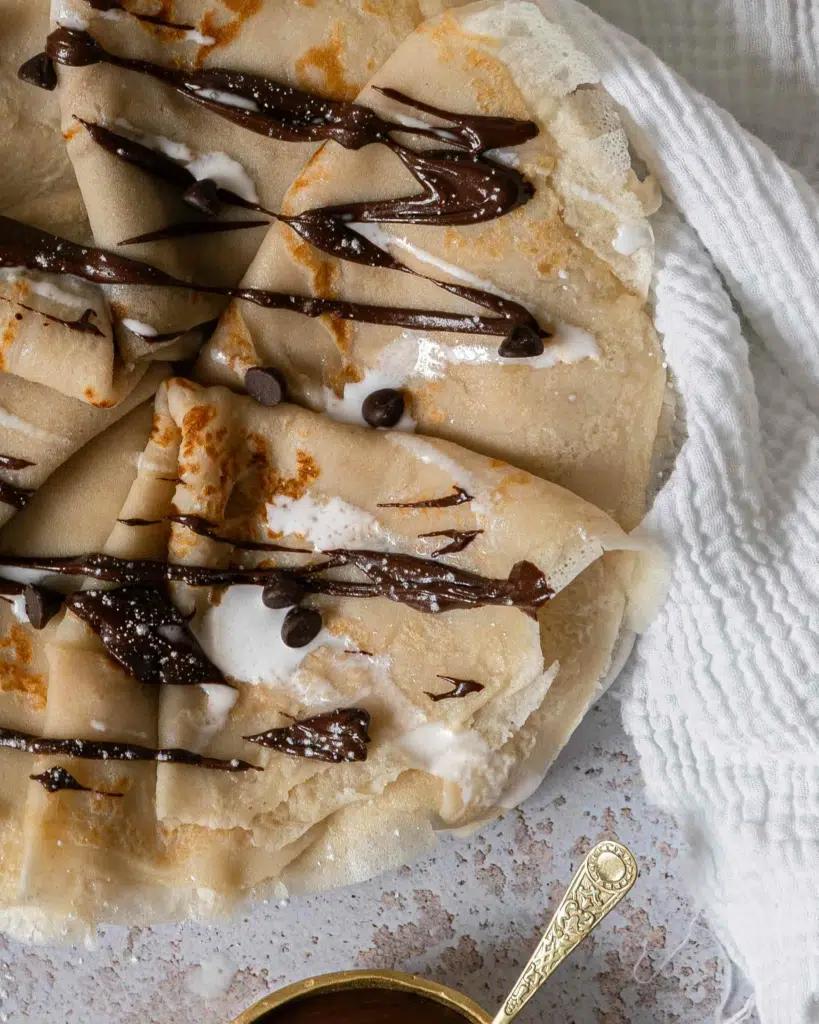
These dairy-free crepes feature a light coconut flavour that pairs so well with many fillings, however, if you’re looking for a plain crêpe recipe without coconut, click here to view our recipe for How to Make Crêpes Without Milk.
What is a crêpe
Crêpes are very thin pancakes, a French classic that is often served as a special breakfast. They can be served rolled or folded, filled and topped with a variety of sweet and savoury ingredients.
How are crêpes traditionally made?
Crêpes are traditionally made with a 2:2:1 ratio of milk, to eggs, to flour. This produces a thin, pourable batter that is cooked briefly in a crêpe pan until the edges are crisp and golden spots appear on the surface. The crêpe is then folded or rolled and served with toppings such as fresh fruit and chocolate sauce.
What is the difference between crêpes and pancakes?
Crêpes are much thinner and larger than pancakes, however, the delicate sweet taste is similar in both. Whereas pancakes are thicker and tend to hold their form, crêpes are supple and thin, perfect for folding or rolling up with filling inside.
In this recipe for crepes with coconut milk, we are making classic French-style crepes using creamy coconut milk in place of the dairy milk or cream used in traditional recipes.
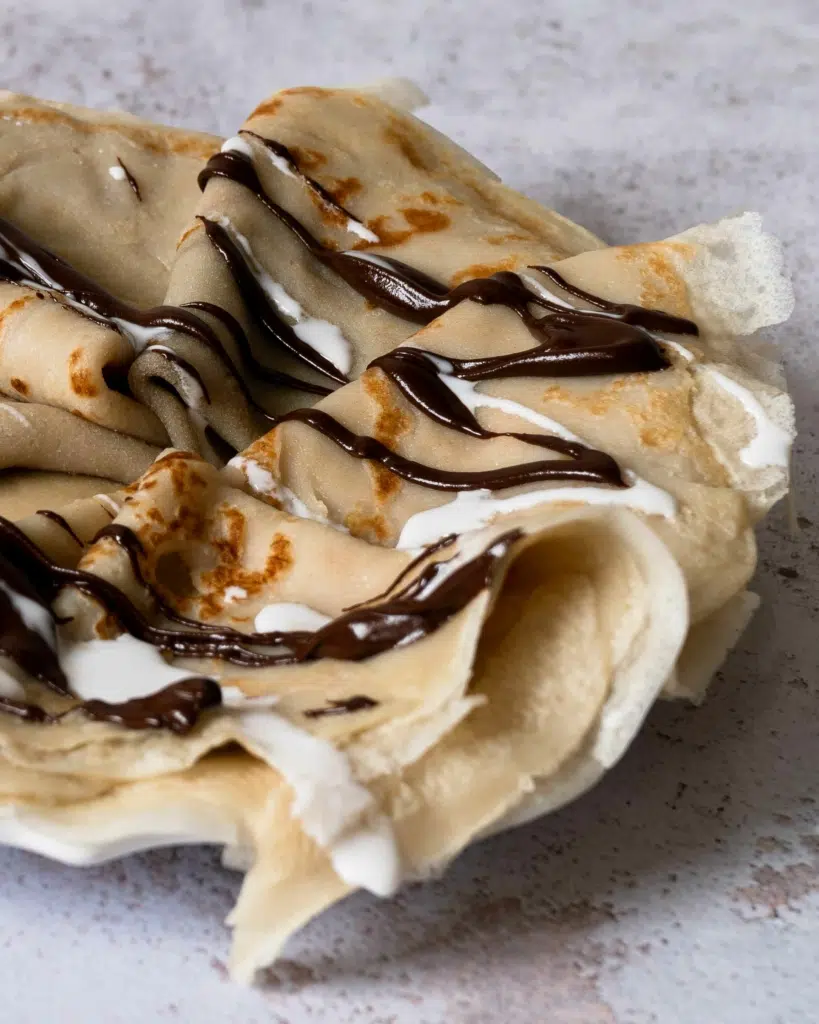
Ingredients for Making Coconut Milk Crêpes
Coconut milk – Use full-fat tinned coconut milk at room temperature and make sure you shake it to combine the cream and clear liquid before use. You can use a light version of tinned coconut milk but the result will not be as rich. If you would like to use drinkable dairy-free milk (the type you get in a carton), take a look at our Crêpes Without Milk recipe instead.
Water – Used to lighten the crêpe batter, both in texture and flavour.
Vanilla extract – adds sweetness and a delicate flavour. Omit if you’re making savoury coconut milk crêpes.
Plain flour (all purpose flour)
Sugar – omit if you’re making savoury crêpes
Salt
Oil for frying – We recommend coconut oil for this recipe as it adds to the delicate coconut flavour, however, vegan butter also works well. If you’ve got a great non-stick pan you could also try using cooking spray. If you’re making savoury crepes you could use light olive oil (not extra virgin).
Success Tips for Perfect Coconut Milk Crepes
Tips for making the crêpe batter
- Bring the coconut milk to room temperature. Using tinned full-fat coconut milk is a must in this dairy free crepe recipe. Cold coconut milk tends to separate into solid white cream and a clear liquid underneath, therefore make sure the tin of coconut milk is at room temperature before using it.
- Ideally, use a blender. We include tips on how to make these crêpes without a blender in the recipe card below, however, if you do have a blender to hand we recommend using it to make a smooth batter. Coconut milk, even at room temperature, can still separate, therefore using a blender ensures the batter is as smooth as possible.
- A pourable batter consistency. The crêpe batter should be a thin, pourable consistency, similar to that of single cream (pouring cream).
- Rest the crêpe batter. Rest the batter for 30 minutes at room temperature or up to 12 hours in the fridge. Crêpes are a great ‘make in advance’ breakfast or dessert since you can whip up the batter and leave it in the fridge overnight. If the batter has thickened during resting, just add a tablespoon or two of water and stir it until it is a pourable consistency (similar to single cream).
Tips for cooking coconut milk crêpes
- Preheat the pan. You don’t need a specific crêpe pan, however, you do need a non-stick pan that truly doesn’t stick! Preheat the pan over medium heat for a minute or two – it needs to be hot before you start to cook your crêpes.
- LIGHTLY grease the pan. Use coconut oil (or vegan butter) to grease the pan and then carefully wipe away any excess with kitchen towel before adding your first crêpe. It’s important not to have a pool of oil in the pan otherwise your crêpes will fry and burn.
- Use a medium-high heat to cook. Aim for a medium-high heat to cook your crêpes (we had our hob set at 70%). Too hot and the crêpe batter will set before you can swirl it around to cover the pan, and if the pan is not hot enough the crêpes will take too long to cook, resulting in a dry or rubbery crêpe.
- Use just enough mixture to cover the pan. Ladle the batter into the hot pan, whilst swirling it around to evenly coat the pan in batter. You want just enough batter to cover the pan in an even, thin layer. Here is approximately how much batter you’ll need:
- 20cm / 8” pan – 50ml or 3 tbsp of batter
- 25cm / 10” pan – 60ml or 1/4 cup of batter
- 30cm / 12” pan – 80ml or 1/3 cup of batter
- Check before you flip. When the top of the crêpe has dried and no longer has a wet sheen, and the edges of the crêpe are crisp and releasing from the surface of the pan, it’s time to check the crêpe and consider flipping it (after approximately 2-3 minutes). Lift the edge of the crêpe with a spatula or slice and take a look underneath; if there are a few golden brown spots then go ahead and flip your crêpe, if not, give it another 20 seconds and then check again. Note: Coconut milk crêpes tend to be light in colour due to the absence of egg yolk and butter, therefore you should not expect them to be as golden as non-vegan crêpes.
- Handle lightly. Coconut milk crêpes are more delicate than traditional crêpes, therefore be sure to handle them gently. Ensure they are cooked well on the first side before attempting to flip them – if they are not cooked until crisp on the first side, you may struggle to flip them.
- Use crêpe no.1 to practice. For some reason, the first crepe (just like with pancakes) tends not to cook perfectly. Use it as a tester – practice your flipping technique and work out the perfect amount of batter for your pan.
Tips for making ahead and storing your coconut milk crêpes
- Cooking the crêpes. As the crêpes cook, stack them on a cooling rack covered in a paper towel or a clean tea towel. They may seem crisp to start with, however, they will soften up as they rest, ready to be filled and folded. Serve them warm with your topping of choice (see this section for some filling inspiration).
- Storing the crêpes. If you’d like to make your crêpes in advance, cool them fully and then stack them with non-stick parchment paper in between each crêpe. Wrap them or put them in an airtight container and refrigerate for up to two days, or freeze them for up to two months.
- Reheating the crêpes. Defrost the crêpes in the fridge fully before use. Reheat by popping them in the microwave for 30 seconds, or in a lightly greased pan over low heat until warm.
How to make crêpes with coconut milk
Equipment
To make these vegan crepes you’ll need a mixing bowl, measuring jug, sieve and ideally a blender (although not essential).
To cook the crêpes you’ll need a non-stick pan and slice for flipping. Whilst a special crêpe pan is useful, it’s not necessary. We used a 30cm (12″) non-stick frying pan, however, the size does not matter too much and we include tips on how to convert the recipe for a smaller pan.
Steps
Make sure to head to the recipe card below for the full recipe and instructions! With Shrove Tuesday fast approaching, let’s learn the basic steps for how to make coconut milk crepes:
Gather together your ingredients. Shake the can of coconut milk vigorously to combine.
- Add the coconut milk, water and vanilla to a blender.
- Sift the plain flour, sugar and salt into the blender.
- Blend for 30 seconds until smooth.
- Rest the batter for 30 minutes (or up to 12 hours in the fridge).
- Lightly grease and preheat a non-stick pan.
- Add just enough batter to cover the pan in a thin layer. Cook for around 2-3 minutes on the first side and 1-2 minutes on the other side, until cooked through with crisp edges and light golden spots on the surface.
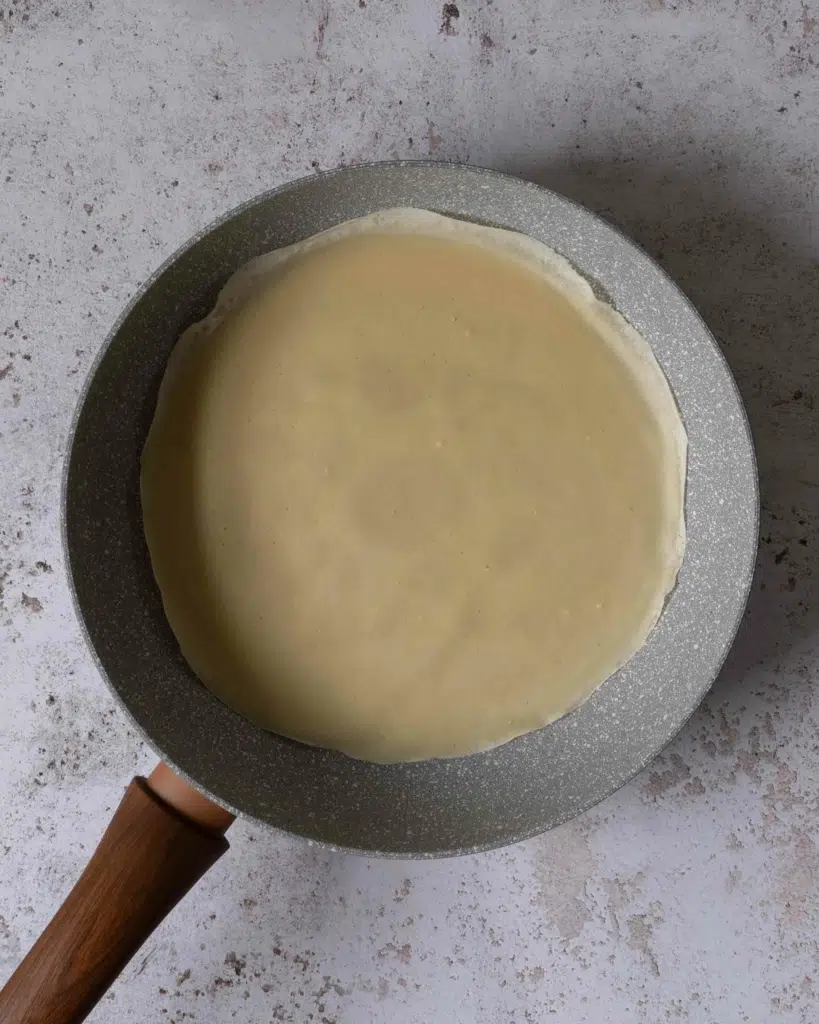
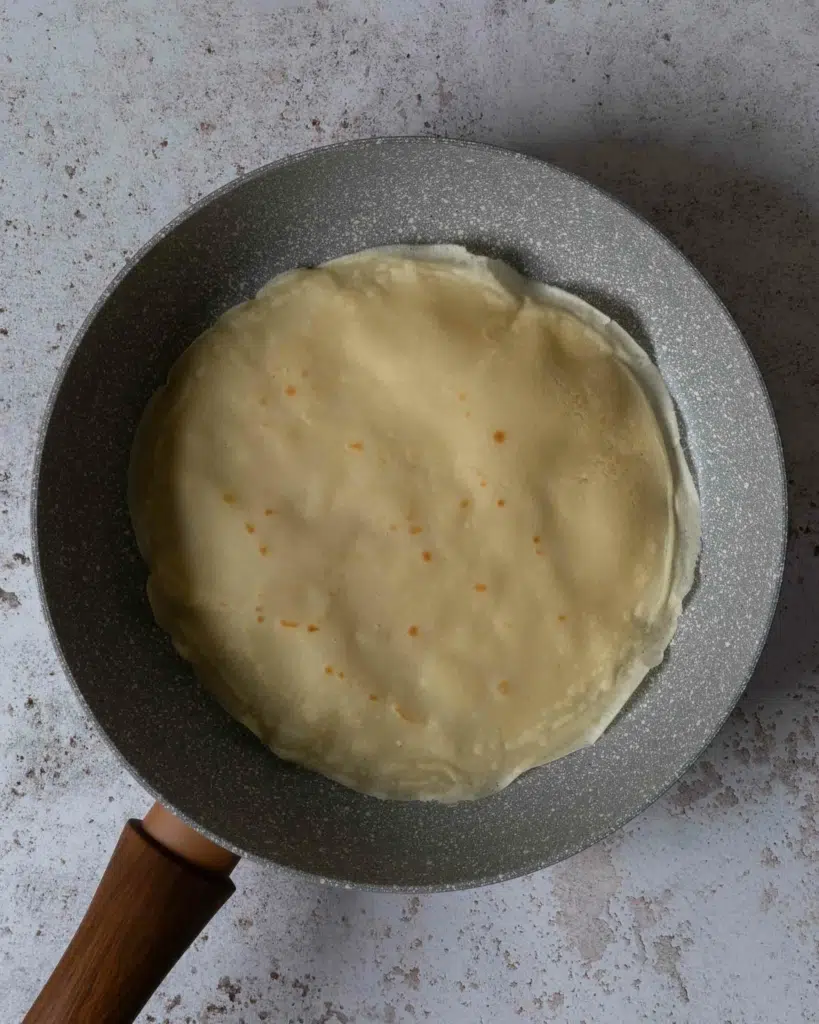
Vegan Sweet Crêpes Filling Ideas
Here are some wonderful fillings to go with this crêpe recipe this Ash Wednesday, for the perfect breakfast or dessert:
- Coconut crepes with coconut filling – Serve the crêpes filled with finely diced ripe mango, a squeeze of fresh lime juice, a sprinkling of desiccated coconut, a drizzle of coconut cream and coconut sugar.
- Coconut milk banana crepes – Serve the coconut milk crêpes with diced banana, toasted coconut flakes, flaked almonds and a drizzle of coconut cream
- Sweetly citrus – Serve the crêpes with a squeeze of fresh orange juice and a sprinkling of brown sugar
- PBJ – Serve with a drizzle of smooth peanut butter, warm jam and diced berries
- Berries and cream – Serve with whipped coconut cream (or ice cream), sliced strawberries, blueberries, raspberries, berry coulis and maple syrup for a creamy, sweet and tangy treat!
These coconut milk crêpes can also be served with savory fillings. Omit the sugar and vanilla from the recipe if you would like to make savory crepes. Please share your favorite fillings and favorite toppings by getting in touch with us!
FAQs
Can you make crêpes with coconut milk?
Yes, you can make crêpes with coconut milk! Our recipe for vegan coconut milk crêpes is tender and delicately flavoured with coconut.
The level of coconut flavour with vary depending on the type of coconut milk you use – some have a stronger coconut flavour than others, so bear this in mind depending on your preference.
The process of making crêpes with coconut milk is much the same as it is for traditional crêpes. Coconut milk crêpes are a little more delicate than traditional crêpes, therefore make sure they’re fully cooked (and slightly crisp) on the first side before flipping them, to avoid tearing.
What is a good substitute for milk in crêpes?
You can make crêpes with full-fat coconut milk as a substitute for dairy milk, like in this coconut milk crêpes recipe, or you can use your favourite non-dairy milk (such as almond milk, oat milk or soya milk) by following this recipe for Crêpes Without Milk.
How thin should crêpe batter be?
Crêpe batter should be a thin, pourable consistency, similar to that of single cream (pouring cream). So you are looking for it to be thinner than double cream (heavy cream) but thicker than milk.
Why are my crêpes rubbery?
Rubbery crêpes can be caused by over-mixing the batter or cooking the crêpes over a heat that is too low. Avoid over-mixing the batter by using a blender to briefly mix the ingredients until combined. Cook your crêpes over medium-hot heat and ensure the pan is preheated fully before you use it.
Loved these Coconut Milk Crepes? Here are some more delicious vegan breakfasts to try
I hope you LOVE this recipe for Coconut Milk Crêpes! Please share this recipe with someone you think will love it because it’s our goal to encourage as many people as possible to try plant based eating.
Also, don’t forget to tag @aveganvisit on social media when you make this recipe. I absolutely love seeing your re-creations! Enjoy 🙂 x
If you make this recipe, please leave a comment and star rating below – this provides helpful feedback to both me and other readers. If you want more delicious vegan recipes be sure to subscribe to the A Vegan Visit newsletter. We’d also love for you to join the AVV community on Youtube, Tiktok, Instagram, Pinterest and Facebook.
The Written Recipe:
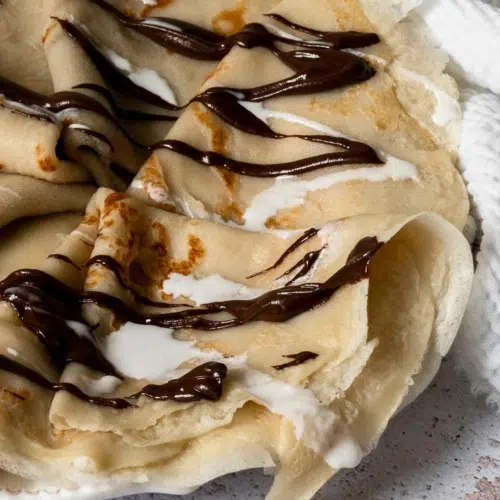
Coconut Milk Crepes (Easy Vegan Dairy-Free Recipe)
Ingredients
- 400 g full fat tinned coconut milk (at room temp, don’t refrigerate)
- 150 ml water
- 1 tbsp vanilla extract
- 180 g plain flour
- 15 g granulated sugar (1 tbsp)
- ¼ tsp salt
- coconut oil for frying
Instructions
To make these coconut milk crêpes using a blender:
- Shake the can of coconut milk vigorously to combine.400 g full fat tinned coconut milk
- Add the can of coconut milk, water and vanilla to a blender.150 ml water, 1 tbsp vanilla extract
- Sift the plain flour, sugar and salt into the blender on top of the liquids.180 g plain flour, 15 g granulated sugar, 1/4 tsp salt
- Blend for around 30 seconds until the flour is combined and the mixture is smooth.
- Set the batter aside to rest for 30 minutes at room temperature or up to 12 hours in the fridge.
- Lightly grease a non-stick pan with coconut oil or vegan butter, removing any excess carefully with a paper towel. Put the pan over a medium-high heat and let the pan heat up.coconut oil for frying
- For a 30cm (12”) pan, add approximately 80ml of batter (1/3 cup) and swirl the pan around until it is evenly coated with a thin layer of batter.Note: For a 20cm (8”) pan you’ll need approximately 50ml (3 tbsp) batter and for a 25cm (10” pan) you'll need approximately 60ml (1/4 cup).
- Cook the crêpe on the first side for around 2-3 minutes* before flipping it over and cooking it for around 1-2 minutes on the second side.Note: You will know when the crêpe is ready to flip when it goes dry on top and the edges of the crepe start to go crispy and lift away from the pan.
To make these coconut milk crêpes without a blender:
- Empty the contents of the tin of coconut milk into a saucepan and warm until any lumps have dissolved. Set it aside to cool to room temperature. Don’t refrigerate.
- Add the room-temperature coconut milk, water and vanilla extract to a jug and whisk to combine.
- Sift the plain flour, sugar and salt into a mixing bowl and stir to combine.
- Make a well in the centre of the flour and add the milk mixture, a little at a time, whisking as you go.
- Once all of the liquid has been added to the bowl whisk the batter briefly until it is smooth.
- Set the batter aside to rest for 30 minutes at room temperature or up to 12 hours in the fridge.
- Lightly grease a non-stick pan with coconut oil or vegan butter, removing any excess carefully with a paper towel. Put the pan over a medium-high heat and let the pan heat up.
- For a 30cm (12”) pan, add approximately 80ml of batter (1/3 cup) and swirl the pan around until the pan is evenly coated with a thin layer of batter.Note: For a 20cm (8”) pan you’ll need approximately 50ml (3 tbsp) batter and for a 25cm (10” pan) you'll need approximately 60ml (1/4 cup).
- Cook the crêpe on the first side for around 2-3 minutes* before flipping it over and cooking it for around 1-2 minutes on the second side.Note: You will know when the crêpe is ready to flip when it goes dry on top and the edges of the crepe start to go crispy and lift away from the pan.



